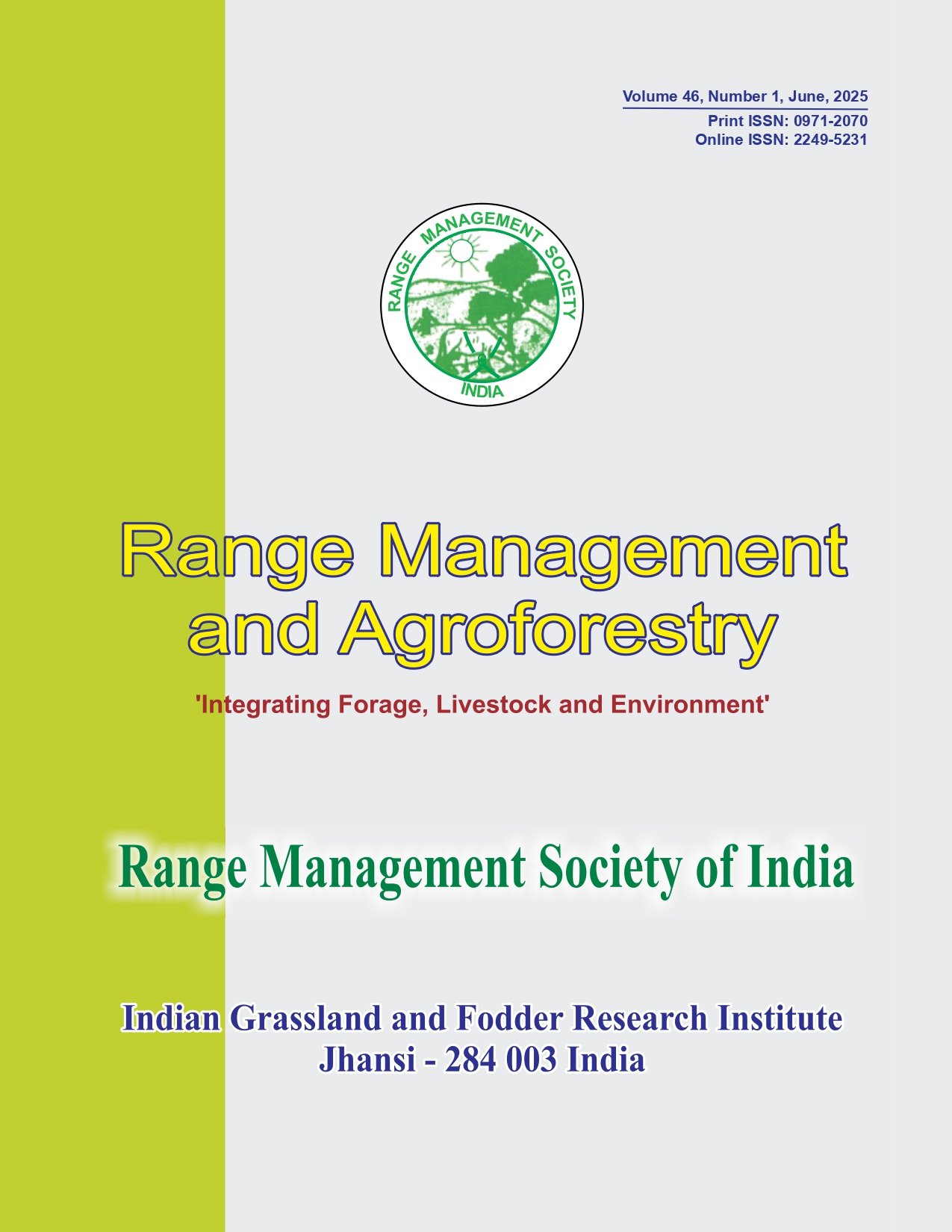Assessment of yield and quality of moringa (Moringa oleifera) as a perennial forage crop under varying sowing patterns and cutting heights
DOI:
https://doi.org/10.59515/rma.2025.v46.i1.25Keywords:
Cost of production, Crude protein, Forage moringa, Green fodder yield, Nutrient uptakeAbstract
An experiment was conducted at ICAR-CIRG, Makhdoom, from 2021 to 2023, to study the effects of sowing patterns and cutting heights on the green fodder yield, nutrient uptake, and production cost of forage moringa. The experiment consisted of three sowing patterns (30×15 cm, 45×15 cm and 60×15 cm) and four cutting heights (15, 30, 45 and 60 cm) in a split-plot design with three replications. Results showed that sowing at 30×15 cm produced the highest green fodder yield (209.57 kg ha-¹), crude protein, nutrient uptake, net returns (Rs 244,056 ha-¹) and B:C ratio (2.39), with the lowest production cost (Rs 0.84 kg-¹). Harvesting of moringa at 30 cm height from the ground yielded the highest fodder (199.12 kg ha-¹), net returns (Rs 238,763 ha-¹), and B:C ratio (2.49) with the lowest cost (Rs 0.81 kg-¹). However, cutting height had no significant effect on nutrient content, uptake, or crude protein content.
Downloads
Downloads
Published
How to Cite
Issue
Section
License
Copyright (c) 2025 Mohd. Arif, Ravindra Kumar, Arvind Kumar

This work is licensed under a Creative Commons Attribution-ShareAlike 4.0 International License.







